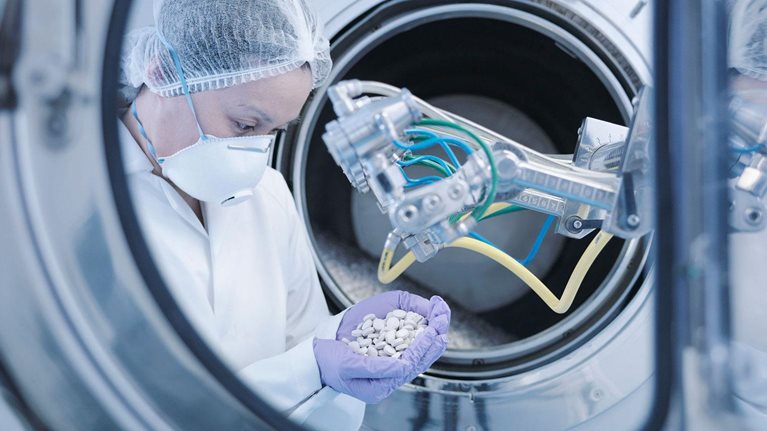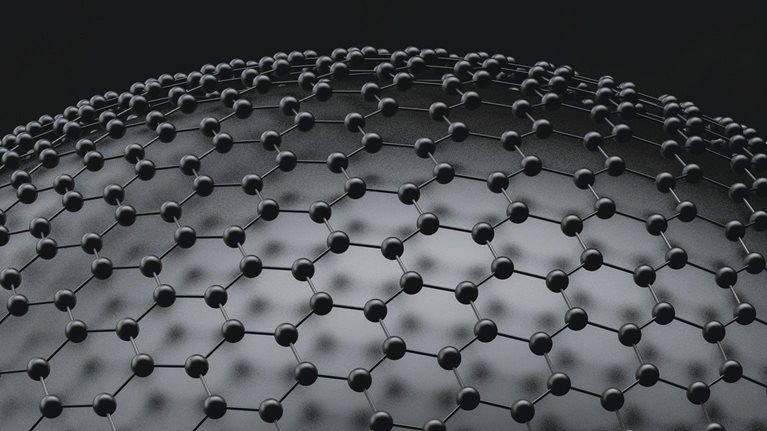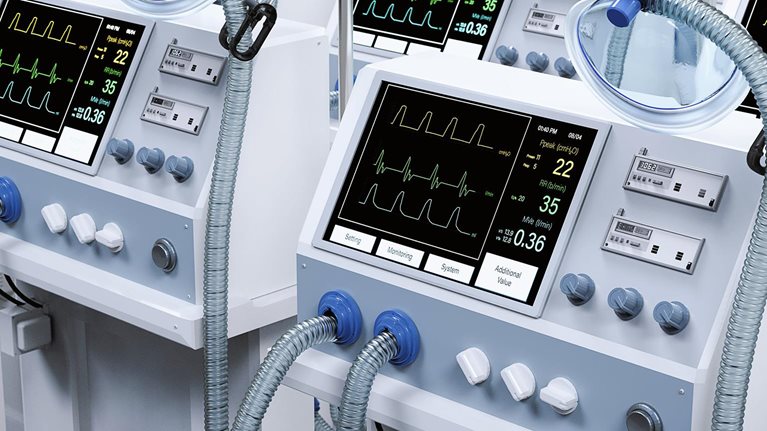This interview is part of the Leading Asia series featuring in-depth conversations with the region's most influential leaders on what it takes to lead in Asia today.
The world of pharmaceuticals is inherently uncertain, risky, and highly competitive. Yet, G. V. Prasad, one of Indian pharma’s best-regarded leaders, has succeeded in maintaining a naturalistic view of the highly complex industry throughout his three-plus decades in the business.
Prasad’s keen admiration and respect for science and nature is an easily distinguishable part of his personality. He loves bird-watching and photographing wildlife and forests in his free time. His office at Dr. Reddy’s Laboratories in Hyderabad—where he currently serves as cochairman and managing director after stepping down as CEO in August 2019—has bookshelves adorned with books on birds, photography, and leadership. A huge molecule-patterned wall filled with the names of the company’s various drugs and medications greets visitors in the office lobby. By Prasad’s own admission, chemistry feels like magic to him. He says he believes in the power of science and technology to innovate, cure diseases, and improve overall human health and well-being.
Prasad’s passion, value system, and rigor—coupled with Dr. Reddy’s Laboratories’ track record of being a purpose-driven company focused on developing innovative and affordable drugs—has resulted in global success. From a handful of employees and an initial capital of INR 2.5 million ($31,000) at the time of its founding in 1984, Dr. Reddy’s Laboratories is now an INR 214.4 billion ($2.83 billion) company in revenue,1 with more than 23,000 employees globally and R&D centers, manufacturing facilities, and a commercial presence in 56 countries. The organization has accomplished several feats in its history, from being the first Asian pharma company outside of Japan to list on NYSE in 2001 to initiating novel drug discoveries and new molecules in India as well as exporting active pharmaceutical ingredients.
In this interview with McKinsey’s Gautam Kumra and Arshiya Khullar, Prasad talks about his leadership philosophy and how it has helped Dr. Reddy’s Laboratories tackle external uncertainties like the COVID-19 pandemic with speed and agility, as well as India’s future as a global innovation hub in biologics and clinical development. This interview has been edited for clarity and length.
Unlocking the magic of science
McKinsey: Let’s start at the beginning. How did you end up at Dr. Reddy’s?
G. V. Prasad: I come from a family that had multiple businesses. My father had a FMCG [fast-moving consumer-goods] business making detergents, but he was also into technology. He wanted me to do chemical engineering to prepare me for an operational role in this company. But by the time I finished my chemical engineering in the US and returned to India, he had sold the business.
So I dabbled in a few things. I joined the family business in construction. Then I was part of a start-up that made pharmaceutical active ingredients. Our factory was located close to Dr. Reddy’s factories, and ultimately the business ended up being acquired by Dr. Reddy’s, so I went back to the traditional family business of construction.
I married the daughter of Dr. Anji Reddy, the company’s founder, in December 1986. Later, in June 1990, after the exit of one of the company’s cofounders, Dr. Anji Reddy asked me to come back and join his business.
McKinsey: You’ve spent more than 30 years across various leadership roles at the organization. What keeps you going in an industry like pharmaceuticals that is full of complexity and uncertainty?
G. V. Prasad: Dr. Anji Reddy was a scientist–entrepreneur who was passionate about science. For him, the business was also a playground where he did things for the first time and was a pioneer. These are some qualities that I learned from him.
I have also been excited about the possibilities of science. The magic of science continues to dazzle me—how you can create innovations and medicines, cure diseases, and do so many different things through science and technology. That is one of the reasons I continue to be in this field. Of course, it is a very complex industry. There are many disciplines that have to come together to create a medicine, including chemistry, biology, physics, as well as human physiology and anatomy. But this is what makes this industry very exciting for me.
Take the example of the speed with which COVID-19 drugs and vaccines were brought to the market. What normally takes ten years was done in a couple of years. Once the whole world focused on finding a solution, we were able to get there. Similarly, human longevity and the quality of life have been impacted by modern science. We have conquered many diseases. Of course, we still have to work on diseases like cancer. But the human race and civilization have made huge progress in the past 50 years in terms of improving the health of the population.
McKinsey: Given the scale of innovation inherent in pharmaceuticals, there must also be several instances when things do not go as planned. How do you respond to—and deal with—failure?
G. V. Prasad: Failure is an inherent component of our industry. We are a very experimentative company. We encourage people to take risks. In that process, if they fail, but they fail for the right reasons, we are OK with that. We don’t punish failure.
On the innovation front, 90 percent of the molecules we start with don’t go anywhere; 10 percent might, if we’re lucky. On the generic side, one in two of the complex products we create do not end up succeeding due to some complexity.
Of course, we would want the success rate to be higher. But as a company we’ve learned to take it in stride, and we are used to this. We have an R&D budget, and we allocate it to our portfolio. Sometimes we also take too many big challenges and then we modulate it a bit. That is an ongoing process of capital allocation as a way to account for some failures.
McKinsey: On a personal front, what do you do to recharge and overcome your own fatigue as a leader?
G. V. Prasad: I think everybody should have hobbies. Otherwise, you become uninteresting; just working alone is not healthy for a good life. I have always been inspired by nature, wildlife, and forests. My friends introduced me to ornithology when I was very young, and bird-watching became one of my passions. From there, I slowly picked up photography. I was initially photographing birds; now I also photograph mammals.
Somebody once asked me what I learned from Dr. Anji Reddy and from my father. Dr. Reddy was a “balcony” person who always saw the big picture, while my father was a very detailed man. I learned to see the forest from my father-in-law and the trees from my father.
Building Dr. Reddy’s purpose-driven healthcare strategy
McKinsey: How has Dr. Reddy’s purpose and company culture evolved over the years since its founding?
G. V. Prasad: Dr. Reddy’s has always been a purpose-driven organization. When Dr. Anji Reddy founded the company, the purpose was to make drugs affordable in India and to find lower-cost alternatives to the expensive API [active pharmaceutical ingredient] being imported from Europe. Then we evolved into generics, saving money for the world’s healthcare systems, and bringing newer molecules to India and other emerging markets.
What gives me a lot of pride is how we responded to the pandemic as a company. There was a shortage of sanitizers when the lockdown in India was announced in March 2020. Without telling anybody, someone in the factory figured out a way to make sanitizers. In three days, huge quantities of sanitizers were made and distributed for free to the population in and around Hyderabad.
Today, we have embraced the credo of “good health can’t wait.” From molecules and medicines, we have now enlarged our focus on health. That has opened us to opportunities beyond pharmaceuticals, such as in nutrition and wellness, prevention of sickness, as well as broader digital platforms. The idea to expand into nutrition and create a digital platform where doctors and healthcare providers can engage with patients, for example, was turbocharged during the pandemic.
McKinsey: What are Dr. Reddy’s road map and strategic focus areas for the next decade?
G. V. Prasad: We will continue our growth trajectory in the core business, which consists of active ingredients, branded as well as unbranded generic products, and biosimilars. In addition, we see long-term potential in innovative drugs. We have a large pipeline of oncology products in our subsidiary called Aurigene Discovery Technologies Limited. There is also growth potential in our services business, where we do discovery services as well as contract development and manufacturing of drug substances and drug products. We are also aiming to do a lot more in biosimilars and take them to regulated markets. We are looking at biology-based medicine development and doing experiments in cell and gene therapy. These are all small experiments at this point, but in ten years they could be transformational for the organization.
The future of Indian pharma: Opportunities and missing ingredients
McKinsey: The pandemic ushered in a new era of vaccine research globally. How has the Indian pharmaceutical industry benefited from this accelerated momentum?
G. V. Prasad: During the pandemic, I noticed that the interests of the industry and government were much better aligned to get solutions to the market as soon as possible. Usually, the industry wants to move fast and tap the opportunity, while the government wants to be rigorous, thorough, and focus on safety and price control.
While India has made a lot of progress during the past few years, I would like our research institutions to develop more expert panels that can make judgments as well as guide and engage with the industry. The Indian pharmaceutical industry has become proficient at developing generic products, but if we want to innovate and bring new therapies and biology-based medicines such as antibodies and novel cell and gene therapies to India, our expertise needs to go up exponentially.
Second, regulators also need to become enablers and help the industry in designing their clinical-development pathways and understanding how to bring innovation for patients in India. They should provide guidance to the industry on how to innovate effectively. Today, most companies look at the US FDA or the European agencies to get guidance on drug development.
Third, there is a need to improve funding of clinical development and for the investors to understand how the whole investment cycle of building an innovative pipeline works. The pharmaceutical industry, government, regulators, and the entire ecosystem need to evolve.
McKinsey: Looking ahead, where are you seeing the most innovation and R&D right now in the Indian pharmaceutical industry?
G. V. Prasad: There are two areas that present huge opportunities for India. One is the development of biologics,2 such as biosimilars, novel biologics, and cell and gene therapies. The cost of building these in India is a lot lower than in Western markets, due to lower infrastructure and personnel cost. We have a natural cost advantage in innovating in this space.
Second, we can have a big competitive advantage in clinical development. We have a large population of patients who have not previously received any treatments and are therefore eligible for a robust clinical-trial procedure, a good hospital network, and reasonable regulatory pathways for clinical development.
If we can leverage our existing competence in chemistry, new biology, and clinical development, India can be a force in innovative pharmaceuticals. China has done this reasonably well. They’ve supported their companies for innovation and have also evolved well in chemistry, biology, and clinical development. I think that is a good template for us to learn from.
McKinsey: How is leading a pharmaceutical company in India different from leading one in the rest of the world? What advice would you give to the next generation of pharmaceutical leaders?
G. V. Prasad: India is a highly competitive and fragmented market to operate in, and there are thousands of companies. Dealing with all the challenges of operating in an underdeveloped ecosystem gives us a lot of training. The economics of competing in India builds a lot of muscle in an organization, which makes it very competitive in the global arena. To that extent, I think Indian companies have demonstrated that they can be as competitive as anybody in the world.
My advice to leaders would be to be authentic to yourself and to the world. If you are not living an authentic life, it is not worth it.
You also have to understand your inner purpose, what excites you, and then figure out how you can achieve that in your roles. Don’t just go after wealth maximization, promotion, or career as your central theme; also go after what gives you fulfillment, satisfaction, and intellectual growth. The Japanese have a term for it: ikigai.3 One has to look for that sweet spot and not rest till one finds it.


